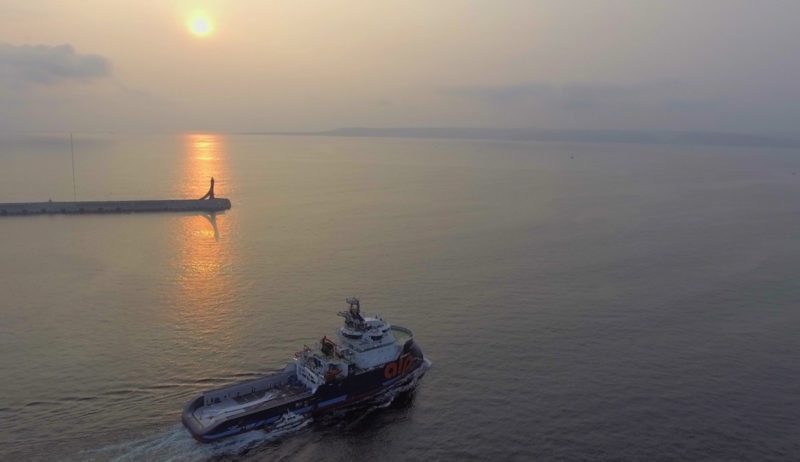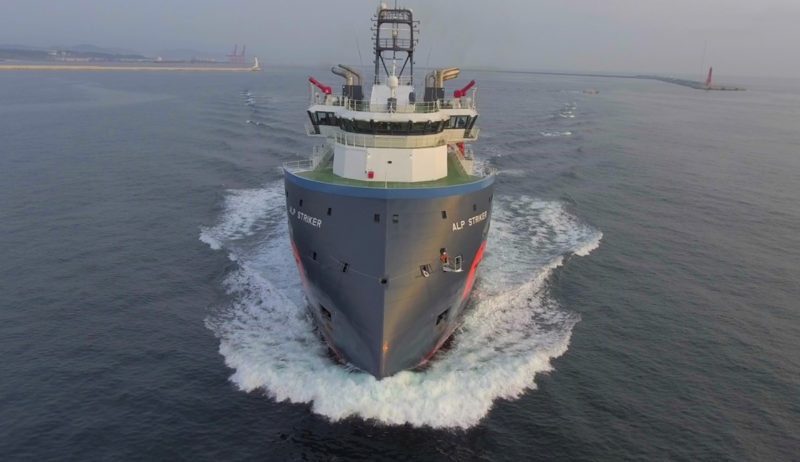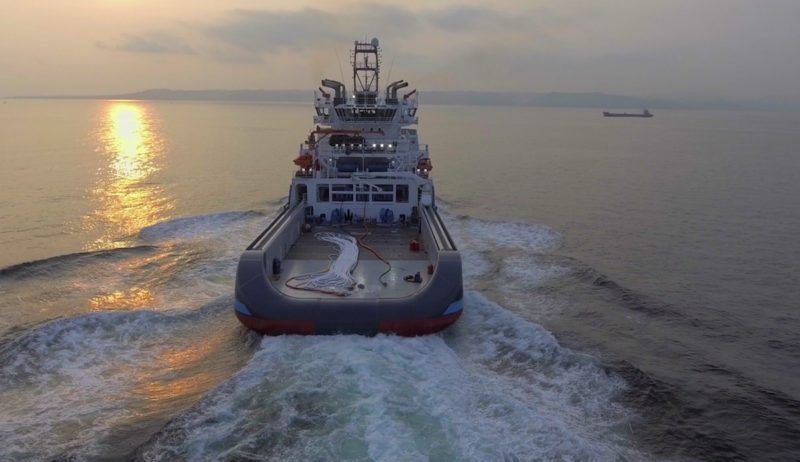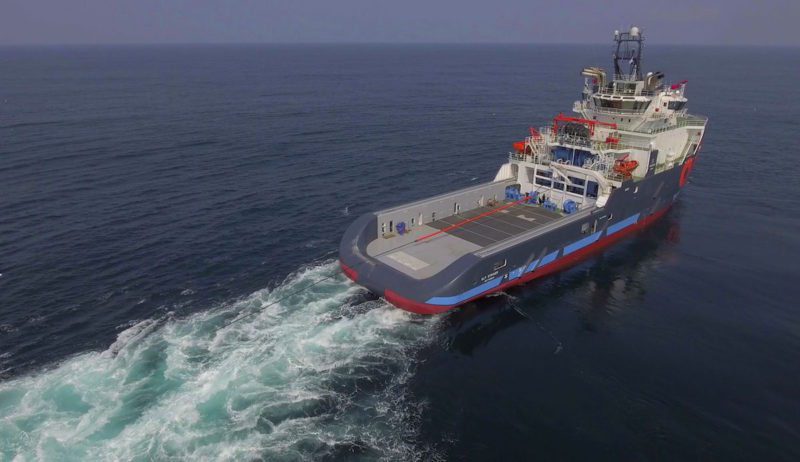Israel Deports 29 More Gaza Aid Flotilla Activists
JERUSALEM, Oct 5 (Reuters) – Israel has deported a further 29 activists detained by the navy last week for taking part in a flotilla that sought to deliver aid to blockaded Gaza, the foreign...

ALP Striker is the first vessel in ALP’s new Future-class of DPII Anchor Handling Salvage Tugs. Photo: Ulstein Group
The first of four new long-haul towing and anchor handling tugs for ALP Maritime has returned from sea trials where it achieved an impressive 309.6 tonne bollard pull during testing.
The ALP Striker was delivered to ALP, a subsidiary of Teekay Offshore, on September 12 following construction at Niigata Shipbuilding & Repair, Japan. The vessel is the first in ALP’s upcoming Future Class, a series designed for stronger and larger towing projects to match the increasing size of the latest FPSOs, FLNGs an other similarly large floating objects.
The ALP Striker is based on the DP2, 300t bollard pull ULSTEIN SX 157 design, provided by Norwegian designer and shipbuilder Ulstein Group. In addition to its impressive towing capability, ALP Striker is also made for anchor handling, positioning and mooring, with a stern roller, a three-drummed winch with 400t hoisting capacity, and chain lockers.
According to Ulstein, the vessels have a service speed of 13 knots, with a top speed of 19 knots. Fuel capacity is more than 3,500 cubic meters, providing enough fuel for a continuous tow at full power for 45 days, enough for a non-stop Trans-Atlantic, Indian or Pacific Ocean tow. The ships can accommodate a large 35-person crew, again reflecting the long periods of time planned to be spent at sea. The vessels are 88.9 meters long and 21 meters wide.


FUN FACT: While the 309.6t bollard pull of the ALP Striker is surely impressive, the Guinness World Record for the world’s most powerful tugboat is held by Farstad Shipping’s Far Samson, which achieved an astounding 423 tonne bollard pull during testing.


Photos courtesy Ulstein Group
“These vessels are able to perform worldwide ocean towage of any distance, as well as positioning and hook-up of floating installations to pre-laid mooring systems, anchoring of installations and floating objects and disconnecting and mooring retrieval as part of repositioning or decommissioning operations. The vessels are able to do this with minimal fuel bunkering stops, optimal fuel-efficiency with a four-independent engine configuration, and high Bollard Pull. ULSTEIN X-BOW© design guarantees optimal course stability and sea keeping in adverse weather and sea conditions.”

Sign up for gCaptain’s newsletter and never miss an update

Subscribe to gCaptain Daily and stay informed with the latest global maritime and offshore news
Essential news coupled with the finest maritime content sourced from across the globe.
Sign Up